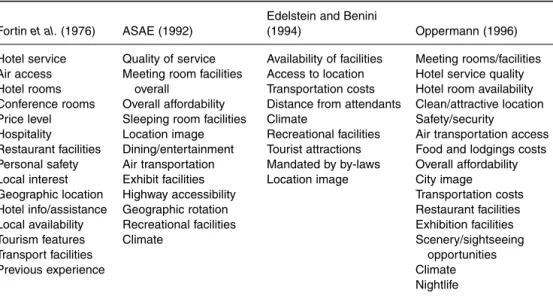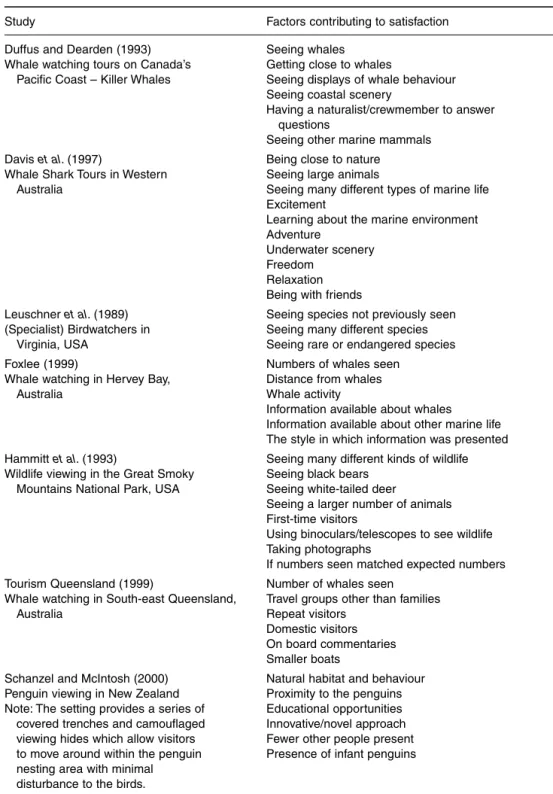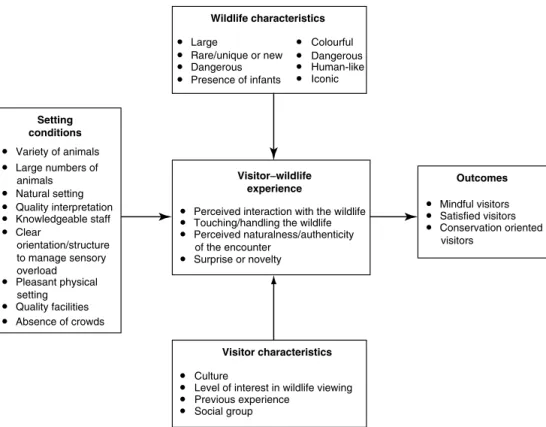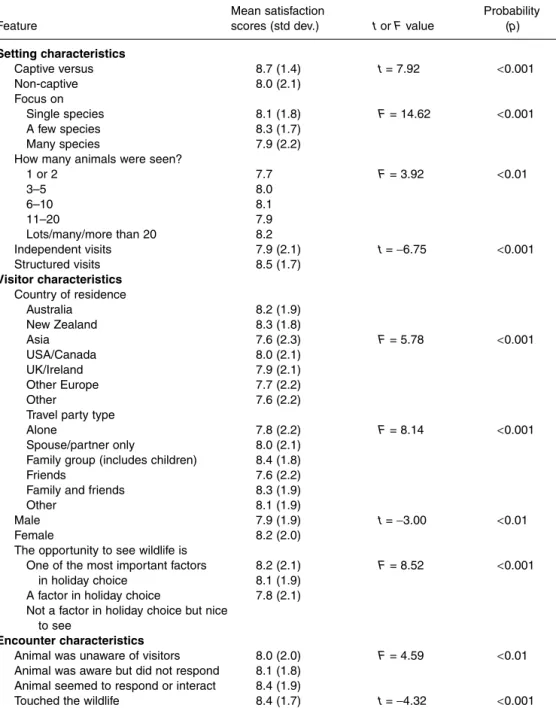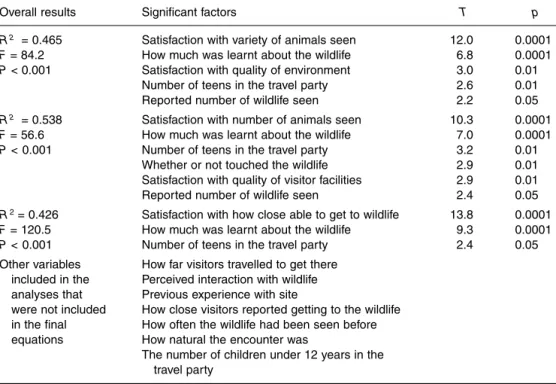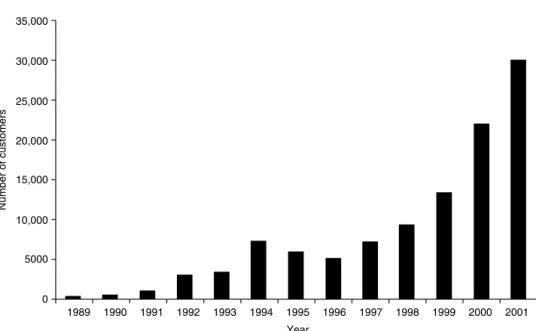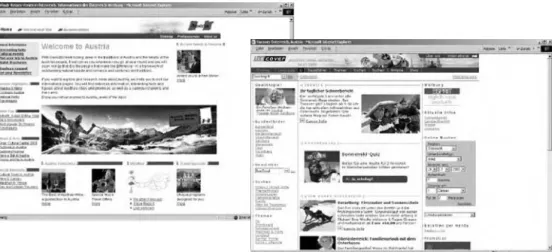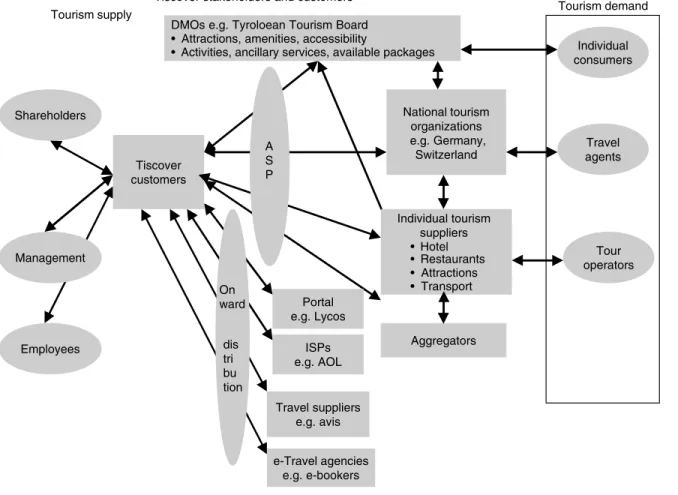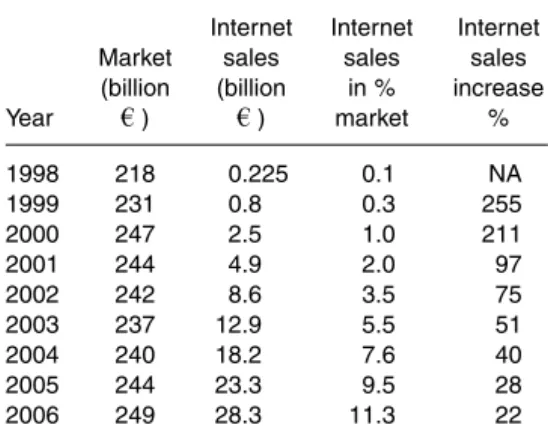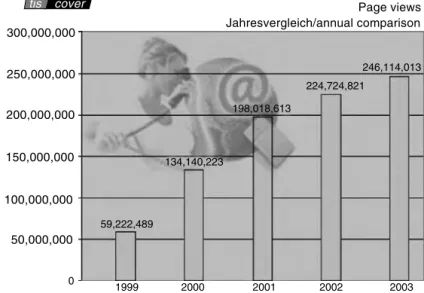Theory and International Applications
Bruce Prideaux
To all the Pearce boys for their ability to amuse and distract Gianna Moscardo
And, to Barbara Eric Laws
AND HOSPITALITY SERVICES
Theory and International Applications
Edited by
BRUCE PRIDEAUX GIANNA MOSCARDO
ERIC LAWS
CABI Head Office CABI North American Office
Nosworthy Way 875 Massachusetts Avenue
Wallingford 7th Floor
Oxfordshire OX10 8DE Cambridge, MA 02139
UK USA
Tel: +44 (0)1491 832111 Tel: +1 617 395 4056 Fax:+44 (0)1491 833508 Fax: +1 617 354 6875 E-mail: [email protected] E-mail: [email protected] Website: www.cabi.org
©CAB International 2006. All rights reserved. No part of this publication may be reproduced in any form or by any means, electronically, mechani- cally, by photocopying, recording or otherwise, without the prior permission of the copyright owners.
A catalogue record for this book is available from the British Library, London, UK.
Library of Congress Cataloging-in-Publication Data Managing tourism and hospitality services: theory and international applica- tion / edited by B. Prideaux, G. Moscardo, E. Laws.
p. cm.
Includes bibliographical references and index.
ISBN-13: 978-1-84593-012-7 (alk. paper) ISBN-10: 1-84593-012-6 (alk.paper)
1. Hospitality industry--Management. 2. Tourism--Management. I.
Prideaux, B. (Bruce) II. Moscardo, Gianna. III. Laws, Eric, 1945- IV. Title.
TX911.3.M37M323 2005
647.94'068--dc22 2005016925
ISBN-10: 1 84593 012 6 ISBN-13: 978 1 84593 012 7 Typeset by SPi, Pondicherry, India.
Printed and bound in the UK by Biddles Ltd, King’s Lynn.
Contributors ix
List of Figures xiii
List of Tables xv
PART I –MANAGING CUSTOMER SATISFACTION
1. Quality and Service Management Perspectives 1 Eric Laws, Bruce Prideaux and Gianna Moscardo
2. Convention Delegates – The Relationship Between Satisfaction
with the Convention and with the Host Destination: A Case Study 15 Leo Jago and Marg Deery
3. Issues Pertaining to Service Recovery in the Tourism and Leisure
Industries 26
Shane Pegg and J.-H.K. Suh
4. Is Near Enough Good Enough? Understanding and Managing Customer Satisfaction with Wildlife-based Tourism
Experiences 38
Gianna Moscardo
5. Management of Tourism: Conformation to Whose Standards? 54 Noel Scott
PART II –COMPETITION AND COLLABORATION
6. Tiscover – Development and Growth 62
Dimitrios Buhalis, Karsten Kärcher and Matthew Brown
7. Co-branding in the Restaurant Industry 73
Maryam Khan
8. Airline Service Quality in an Era of Deregulation 83 Dawna Rhoades, Rosemarie Reynolds and Blaise Waguespack, Jr
v
PART III– SERVICE DESIGN AND IMPROVEMENT
9. Service System: A Strategic Approach to Innovate and
Manage Service Superiority 94
Jay Kandampully and Ria Kandampully
10. Marketing Tourism Online 104
Lorri Krebs and Geoffrey Wall
11. Guidelines for Professional Activity Services in Tourism –
A Discussion About the Quality of a Tourist Experience Product 115 Raija Komppula
12. Tourism Development: Hard Core or Soft Touch? 126 Fiona Williams and Marsaili MacLeod
13. Quality Management for Events 145
Donald Getz and Jack Carlsen
14. CAVIAR: Canterbury and Vladimir International Action for Regeneration – A Case Study of Techniques for Integrated
Marketing, Service Quality and Destination Management 156 Barbara Le Pelley and William Pettit
PART IV– MANAGING STAFF–CUSTOMER RELATIONS
15. Emotional Labour and Coping Strategies 170
Barbara Anderson
16. Service Ethics for Ecotourism Guides 181
Xin Yu and Betty Weiler
17. Effective Management of Hotel Revenue: Lessons from the
Swiss Hotel Industry 195
Kate Varini and Dimitrios Diamantis
18. Service Management in a World Heritage Area – Tourists,
Cultures and the Environment 209
Malcolm Cooper and Patricia Erfurt
19. The Relationship Between Airline Cabin Service and National
Culture: A Cabin Crew Perspective 218
Bruce Prideaux and Seongseop Kim
20. Considerations in Improving Tourism and Hospitality
Service Systems 225
Eric Laws
PART V –RESEARCHING TOURISM AND HOSPITALITY SERVICE MANAGEMENT
21. The Role of Research in Improving Tourism and Hospitality
Services: Measuring Service Quality 237
Simon Hudson, Graham A. Miller and Paul Hudson
22. Service Quality at the Cellar Door: A Lesson in Services
Marketing from Western Australia’s Wine-tourism Sector 251 Martin O’Neill and Steve Charters
23. Using the Critical Incidents Technique to Understand Service
Quality in Tourist Accommodation 262
Gianna Moscardo
24. Factors of Satisfaction: A Case Study of Explore Park 274 Muzaffer Uysal
25. The Value of a Benchmarking Approach for Assessing Service
Quality Satisfaction in Environmental Tourism 282 Philip L. Pearce
26. The Development and Tracking of a Branding Campaign
for Brisbane 300
Noel Scott and Stephen Clark
27. The Rasch Model Applied to Customer Satisfaction in Marbella 314 José L. Santos-Arrebola
PART VI –CONCLUSION
28. Researching and Managing Tourism and Hospitality Service:
Challenges and Conclusions 327
Gianna Moscardo, Bruce Prideaux and Eric Laws
Index 335
ix Anderson, B., International Graduate School of Management, University of South Australia, GPO Box 2471, Adelaide, SA 5001, Australia.
Brown, M., Tiscover AG, Travel Information Systems, Maria-Theresien-Strasse 55-57, A-6020 Innsbruck, Austria.
Buhalis, D.,Centre for eTourism Research (CeTR), School of Management, University of Surry, Guildford GU2 7XH, UK.
Carlsen, J., MUI Chair in Tourism & Hospitality Service, Co-director, Curtin Sustainable Tourism Centre, Curtin University of Technology, GPO Box U1987, Perth, WA 6845, USA.
Clark, S.,Ex Manager, Strategic Planning Tourism, Queensland, Australia. Email: stephen@
goodthinking.com.au.
Cooper, M.J., International Cooperation and Research, Ritsumeikan Asia Pacific University, 1-1 Jumonjibaru, Beppu-shi 874-8577, Japan.
Deery, M., Centre for Hospitality & Tourism Research, Victoria University, PO Box 14428, Melbourne City, MC 8001, Australia.
Diamantis, D.,Les Roches Management School, Switzerland.
Erfurt, P.J.,Ritsumeikan Asia Pacific University, 1-1 Jumonjibaru, Beppu-shi 874-8577, Japan.
Getz, D.,Haskayne School of Business, University of Calgary, Canada.
Hudson, P.,JMC Holidays, UK.
Hudson, S., Haskayne School of Business, 2500 University Drive NW Calgary, Alberta T2N IN4.
Jago, L.,CRC for Sustainable Tourism, C/- Centre for Hospitality and Tourism Research, Victoria University, PO Box 14428, Melbourne City MC, Victoria, Australia 8001.
Kandampully, J., Professor of Services Management, 265 J Campbell Hall, 1787 Neil Avenue, Ohio State University, Columbus, OH 43210-1295, USA.
Kandampully, R., 265 J Campbell Hall, 1787 Neil Avenue, Ohio State University, Columbus, OH 43210-1295, USA.
Karcher, K.,Tiscover AG, Travel Information Systems, Maria-Theresien-Strasse 55-57, A-6020 Innsbruck, Austria.
Khan, M., Room 565, Hospitality Program, Dept of Management, School of Business, Howard University, 2600 6th Street, NW, Washington, DC 20059, USA.
Kim, S.S.,Department of Hospitality & Tourism Management, Sejong University, Seoul, Korea.
Komppula, R., Finnish University Network for Tourism Studies, University of Joensuu, PO Box 111, FIN-80101 Joensuu, Finland
Krebs, L.,Department of Geography, University of Waterloo, Waterloo, Ontario, Canada N2L 3G1.
Laws, E.,Adjunct Professor, James Cook University, Cairns, Queensland, Australia. E-mail:
Le Pelley, B., Guernsey Planning Department, UK. E-mail: barbara.lep@
guernsey.net
MacLeod, M.,Land Economy Research, Scottish Agricultural College, Craibstone Estate, Aberdeen AB21 9YA, UK.
Miller, G.A.,University of Surrey, UK.
Moscardo, G., School of Business, James Cook University, Townsville, QLD 4811, Australia.
O’Neill, M., Dept of Hotel and Restaurant Management, College of Human Sciences, 328B Spidle Hall, Auburn University, Auburn, AL 36849, USA.
Pegg, S.,School of Tourism & Leisure Management, Faculty of Business, Economics &
Law, Ipswich Campus, The University of Queensland, 11 Salisbury Road, Ipswich, QLD 4305, Australia.
Pearce, P.L.,Tourism Program, James Cook University, Townsville, Australia.
Pettit, T., Civic and International Manager, Canterbury City Council, UK. E-mail: william.
Prideaux, B.,James Cook University, PO Box 6811, Cairns, Queensland 4870, Australia.
Renolds, R., Embry-Riddle Aeronautical University, College of Business, 600 S. Clyde Morris Blvd, Daytona Beach, FL 32114, USA.
Rhoades, D., Embry-Riddle Aeronautical University, College of Business, 600 S. Clyde Morris Blvd, Daytona Beach, FL 32114, USA.
Santos-Arrebola, J.L.,Catedratico de Universidad, University of Malaga, Spain.
Scott, N.,School of Tourism and Leisure Management, University of Queensland, Ipswich Campus, 11 Salisbury Road, Ipswich, Queensland 4305, Australia.
Suh, J.-H.K.,School of Tourism & Leisure Management, Faculty of Business, Economics
& Law, Ipswich Campus, The University of Queensland, 11 Salisbury Road, Ipswich, QLD 4305, Australia.
Uysal, M., Virginia Polytechnic Institute and State University, Dept of Hospitality and Tourism Management, 355 Wallace Hall, Blacksburg, VA 24061-0429, USA.
Varini, K.,Ecole Hoteliere Lausanne, Switzerland.
Yu, X., Department of Management/Tourism, Monash University, Berwick Campus, Victoria 3805, Australia.
Waguespack, B., College of Business, 600 S. Clyde Morris Blvd, Daytona Beach, FL 32114, USA.
Wall, G.,Department of Geography, University of Waterloo, Waterloo, Ontario, Canada N2L 3G1.
Weiler, B., Department of Management/Tourism, Monash University, Berwick Campus, Victoria 3805, Australia.
Williams, F.,Land Economy Research, Scottish Agricultural College, Craibstone Estate, Aberdeen AB21 9YA, UK.
Fig. 4.1. A mindfulness model of wildlife-based tourist experiences 42 Fig. 5.1. Sales of Schoolies accommodation by Breakfree Holidays,
1989–2001 59
Fig. 6.1. Comparison of www.austria.info and www.tiscover.at 64 Fig. 6.2. Range of stakeholders, customers and suppliers of Tiscover 66
Fig. 6.3. Page views for Tiscover 69
Fig. 6.4. Booking and reservation requests for Tiscover 69
Fig. 6.5. Visits to Tiscover 70
Fig. 10.1. Sources of information used by Banff winter visitors 109 Fig. 10.2. Internet use and stages of travel of Banff winter visitors 110
Fig. 10.3. Importance of type of information available 111
Fig. 11.1. Prerequisites for the customer-oriented tourist product 119 Fig. 11.2. Packaged tourist product. Source: Komppula and Boxberg
(2002, p. 25) 120
Fig. 11.3. An example of a typical Finnish incentive product 121 Fig. 12.1. Diagrammatic summary of the research proposition 129 Fig. 12.2. The case-study regions. Note: The region of L’Alcoia, Spain, forms
part of the larger administrative region of Camp de Morvedre 131
Fig. 12.3. Purpose of visit 134
Fig. 13.1. 1998 Margaret River Surfing Masters Stage 1: approach and orientation 152 Fig. 13.2. 1998 Margaret River Surfing Masters, Stage 2: On-site Visitor
Experiences 153
Fig. 14.1. Tourist arrivals in Vladimir, 1991–1997 157
Fig. 14.2. SWOT analysis 161
Fig. 14.3. Partnership agreement 163
Fig. 14.4. SADT conceptual diagram 165
Fig. 14.5. SADT Tourism Development Model.@Normal: 166
Fig. 17.1. How managers inform key selling staff of their strategic decisions 204 Fig. 17.2. Forecast daily for the next 3 days, 10 days, month, quarter and year 206 Fig. 17.3. Forecast weekly for the next 3 days, 10 days, month, quarter and year 207 Fig. 21.1. Hospitality research conceptual framework (Morrison, 2002) 238 Fig. 21.2. Importance–performance grid with ratings for holiday dimensions 245 Fig. 22.1. Elements in a successful relationship strategy (From O’Neill,
M.A. and Palmer, J.A. (2002) Wine production as a service
xiii
experience. JSM 16(2), 342–362. Available at
http//www.emeraldinsight.com/jsm.htm.) 252
Fig. 22.2. Importance–performance matrix of individual service attributes 256 Fig. 25.1. Comparing regional satisfaction scores: evidence from reef and
rainforest studies. (Scale 0–10 was used in all the assessments.) 295 Fig. 26.1. Map of Queensland showing developed destinations 305 Fig. 26.2. Tracking of accommodation used on most recent visit to Brisbane
among target market 310
Fig. 27.1. The continuum 317
Fig. 27.2. The tourist satisfaction continuum 317
Fig. 28.1. Concept map of satisfaction in tourism and hospitality 328
xv
Table 1.1. General service gaps 6
Table 2.1. Meeting location attributes: a comparison of association meeting
planner survey results 18
Table 4.1. Summary of factors related to satisfaction with wildlife-based activities 39
Table 4.2. The settings studied 44
Table 4.3. Demographic profile of the sample (n= 4147) 46
Table 4.4. Factors significantly related to satisfaction with WBT 47
Table 4.5. Factors correlated with satisfaction 48
Table 4.6. Most memorable wildlife encountered 49
Table 4.7. Results of multiple regression analyses for satisfaction with wildlife
experiences 50 Table 6.1. Trends in overall online travel market size – Western Europe
1998–2006 67 Table 6.2. Summary of visits, page views and bookings/enquiries –
Tiscover-branded sites 68
Table 7.1. Examples of special co-branded operations 76
Table 8.1. Total quality rates for major airlines 86
Table 8.2. Alliance summary 1994–2001 88
Table 8.3. International mega-alliances 89
Table 11.1. The seven criteria of good perceived service quality 122
Table 12.1. Type and number of interviews 129
Table 12.2. Case-study region’s baseline peripherality index score 131
Table 12.3. Volume of trips in case-study regions 132
Table 12.4. Origin of visitors (visitor survey) 132
Table 12.5. The importance of tourism to the local economy 133
Table 12.6. Tourism business performance 133
Table 12.7. Tourism themes and provision 135
Table 12.8. Services offered by tourism businesses 135
Table 12.9. Unique selling features identified by firms 136
Table 12.10. Visitor pursuits (no. of visitors) 137
Table 12.11. Visitor ratings of the tourism product 137
Table 12.12. Organization and intermediary promotional messages 138
Table 12.13. Business relations 139
Table 12.14. The influence of location on the tourism product and market 141
Table 12.15. Important aspects of business location 142 Table 12.16. Visitor perceptions of accessibility and cost (no. of visitors) 142 Table 12.17. Visitor opinion of goods and services (no. of visitors) 142
Table 13.1. Main dimensions of event quality 146
Table 13.2. Service quality elements for events 147
Table 13.3. Example of diary notes at the surfing event 150 Table 14.1. Tenure of buildings in the historic core of Vladimir 159 Table 14.2. Infrastructure problems in the historic core of Vladimir 160
Table 14.3. Causes of decline in Vladimir’s tourism 160
Table 14.4. Developing assistance for Vladimir 162
Table 14.5. Project phases 164
Table 14.6. Strategic plan for tourism in Vladimir 167
Table 14.7. Vladimir target markets 168
Table 15.1. Profile of interviewees 173
Table 15.2. Case study themes 178
Table 15.3. Organizational strategies to support front-line service workers 179 Table 16.1. Roles of tour guides (examples from interview transcripts) 187 Table 16.2. Roles of tour guides suggested by past studies 188 Table 16.3. Perceived importance of tour guides’ roles. (Independent
samples test: tourist vs guides.) 189
Table 17.1. Swiss tourism revenue 200
Table 17.2. Tourism expenditure in Switzerland 201
Table 17.3. Net travel intensity for trips of +3 overnight stays for selected
years between 1990 and 1998 201
Table 17.4. Key data for travel with at least 1 overnight stay 201
Table 17.5. Swiss hotels and beds capacity 201
Table 17.6. Swiss hotel occupancy 202
Table 17.7. Questionnaire and response 202
Table 18.1. General characteristics of survey respondents 213
Table 18.2. Reason for choosing to visit Fraser Island 213
Table 18.3. Reason for choosing off-road vehicle travelling on Fraser Island 213
Table 18.4. Sources of information on Fraser Island 214
Table 18.5. Use of guides 214
Table 18.6. Rating of information received 215
Table 19.1. Results of GLM (general linear model) with repeated measures for comparison of behaviours of airline passengers by cultural
backgrounds (n= 200) 222
Table 20.1. Steps in managing services 226
Table 20.2. Interactions during services 226
Table 20.3. Difficulties in dealing with customers 227
Table 20.4. Service encounters 228
Table 20.5. The main complaints from hotel guests 230
Table 20.6. Features of museum service quality 231
Table 20.7. Costs of quality management 232
Table 21.1. Applied research in tourism and hospitality 239 Table 21.2. Comparisons between expectation and performance in holiday
dimensions (SERVQUAL) 244
Table 21.3. Comparisons between importance and performance in
holiday dimensions 244
Table 21.4. Comparisons between IPA and SERVQUAL 246
Table 21.5. Ranking service quality dimensions according to the four models
(1 = top service quality score; 13 = lowest service quality score) 247
Table 22.1. Importance–performance means 255 Table 22.2. Importance/performance scores for service quality dimensions 257 Table 23.1. Summary of selected critical incidents technique studies in
tourism and hospitality 265
Table 23.2. Key characteristics of the critical incidents 267
Table 23.3. Major themes in positive incidents 268
Table 23.4. Major themes in negative incidents 269
Table 23.5. Critical incidents coded by SERVQUAL dimensions 271 Table 24.1. Instrumental and expressive measures for the study site 277
Table 24.2. Factor analysis of expectations 278
Table 24.3. Results of regression analysis 278
Table 24.4. Summary of key findings 279
Table 25.1. Attributes necessary for quality satisfaction measures 285 Table 25.2. Example of benchmarking appropriate to satisfaction 289 Table 26.1. Examples of problems with research information 301
Table 26.2. Three general types of research 302
Table 26.3. Relationship between stage of decision and communication effect 306 Table 26.4. Strategic marketing step and corresponding research task 306 Table 26.5. Level of agreement with statements about Brisbane among
target market 309
Table 26.6. Processing of entertainment guide 311
Table 26.7. Use of guide for holidays 311
Table 27.1. Tourist statistics: measure order 318
Table 27.2. The 32 items included in the questionnaire 320
Table 27.3. Tourist statistics: measure order 323
Table 28.1. Summary of key characteristics of the chapters 331
©CAB International 2006.Managing Tourism and Hospitality Services: Theory and International
Applications(eds Bruce Prideaux, Gianna Moscardo and Eric Laws) 1
Perspectives
Eric Laws, Bruce Prideaux and Gianna Moscardo
James Cook University, Australia
Introduction
Managing Tourism and Hospitality Services is the result of extended discussions between the three editors about their own research interests, and between them and colleagues in many countries about activities they have been engaged in. It became apparent that there are some important convergences in tourism and hospitality research, particularly as it relates to the study of service management in these still new and still rapidly developing sectors. In this book, the editors have presented a range of current research which individually records the commitment and application of the contribu- tors, but taken together the collection of work provides a benchmark of current understand- ing, and examines the range of research methods being applied to further deepen the understanding of tourism and hospitality service management research. It is not our belief that this book is a definitive statement of research into this area, rather we hope that it will inspire present and future researchers to consider how to further advance the frontiers of tourism and hospitality research.
The overall aim of the various research projects which form the collection of work in this book is to enhance understanding of qual- ity management in tourism and hospitality.
This introductory chapter now briefly describes the structure of the book, before providing an
initial review of the evolution of tourism and hospitality management research.
The Structure of this Book
Managing Tourism and Hospitality Services is organized in six parts. The 28 chapters deal with a wide range of issues, providing analyses of international tourism and hospitality man- agement practices from many sectors of the industry, and utilizing an interesting selection of research methodologies and conceptual approaches. As the editors show in detail in the review and synthesis of the concluding chapter of this book, the work presented here makes a substantial contribution to the better understanding of current tourism and hospital- ity management and emergent research capabilities, while identifying some gaps and the need for further research in the future.
Part I deals with the core issue for tourism and hospitality managers of customer satisfac- tion. The five chapters examine some specific examples and draw together a range of theo- retical and methodological approaches to customer satisfaction research and manage- ment. This theme of customer satisfaction is taken up in many of the subsequent chapters in this book.
Structural issues are the main focus of chapters in Part II. The three chapters dealing
with competition and collaboration, both of which are strongly characteristic of the indus- try. The resultant tensions provide the dynamic context for managerial strategy while managers deal with the realities of designing and operating the complex socio-technical organizations delivering tourism and hospital- ity services.
The six chapters in Part III build on the understanding of customer satisfaction and the functioning of industry relationships by report- ing and critically analysing examples of improvements to specific tourism and hospital- ity services. Part IV presents six chapters which focus attention on the experiences of those who work in the industry, their interac- tions with clients, and ways of managing them more effectively. A range of important ethical as well as practical and theoretical topics are raised and examined.
Research methods are the particular focus of Part V. The seven chapters provide exam- ples of current research projects and evaluate a variety of methodologies. It is hoped that readers will feel encouraged to adopt a more varied approach to the design of their own future research as a result of reading some of the innovative thinking incorporated here.
Part VI contains one chapter which con- cludes Managing Tourism and Hospitality Services. In this the editors summarize, map and synthesize the analyses and findings of our 48 contributors, and identify some priorities for future research in this challenging and rapidly evolving industry.
Service Quality in Tourism and Hospitality Management It has been suggested that service research has moved on its from its original concerns with distinguishing the study of service issues from those confronting manufacturing sectors (Fisk et al., 1993; Laws, 2000). In part, second generation research is concerned with identify- ing and defining the distinguishing operational characteristics of the various service subsec- tors, but although researchers have been very active in describing the relevant features of tourism and hospitality, we have not yet reached a consensus.
For tourism, research must encompass the impacts of tourist activities on staff and destinations, and consider how the complex structure of the industry mediates both tourist satisfaction and destination impacts. In rela- tion to hospitality, the scale is smaller and the boundaries of research can usually be confined to the interactions between guests and the staff who serve them in the context of particu- lar models for each hotel or restaurant. This may account for the significantly greater vol- ume of service quality oriented studies of hos- pitality operations, and there is therefore much for tourism specialists to learn from their hos- pitality-focused colleagues. In many instances, investigation of a research question, and par- ticularly attempts to develop theory, may require a research design that examines aspects of both tourism and hospitality rather than attempting to make fundamental distinc- tions between these subsectors.
The rationale for the theme of service quality in this book is that most sectors of the tourism and hospitality industry have regularly experienced a high incidence of complaints (Pearce and Moscardo, 1984), including low standards during the journey between home and destination, poor accommodation, poor resort location and associated difficulties. A Consumers Association report discussed in Laws (1997) surveyed 11,500 British mem- bers asking them to rate the tour operators and countries they had patronized in the year to September 1996. The key criterion was
‘whether they would definitely recommend them to a friend who wants to take the same sort of holiday’. Swiss Travel Service was the only operator of the 51 in the survey to gain a ‘definitely’ or ‘probably’ recommendation from all Consumer Association respondents who had used the company. Poor accommo- dation was the main source of dissatisfaction;
other concerns related to representatives, brochure accuracy and changes to the arrangements once booked. Amongst the major tour operators’ clients, the proportion surveyed who would ‘definitely recommend’ a particular tour operator ranged from only 48% for Thomson to a low of 25% for Airtours.
Earlier, the Chief Executive of British Airways had expressed the challenge of man-
aging quality in the service sector in the following terms:
Why not merely run an airline which is so good that it never has any problems? May I assure you that we are in a service business, and service businesses deal with people.
There is never one perfect set of answers for dealing with people problems, otherwise they would not be people. What makes service businesses so interesting and so complex is that their prime stake in trade is people relations, and we are expected to handle those relations in the hurly burly of
commerce, not in the quiet professionalism of a therapist’s room.
(Marshall, 1986, p. 10) Much empirical research shows that the tourism industry is complex (Ashworth and Tunbridge, 1990; Leiper, 1990; Brown, 1998). However, it also highlights the relation- ships between the many organizations contributing to the products tourists purchase from the industry (Morgan, 1994; Buhalis, 2000), and focuses on the dynamics underlying its changing practices (Hall, 1995; Faulkner and Russell, 1997; Lew, 1999; Buhalis and Laws, 2001).
Hudson and Shephard (1998, pp. 61–62), have argued that ‘service quality has been increasingly identified as a key factor in differ- entiating service products and building a competitive advantage in tourism’. They demonstrate how the attributes which con- sumers and producers consider important may be identified and quantified. In a review of PhD research by mature candidates in Britain, Baum (1998, p. 467) commented that ‘there was a noticeable recent focus on research with a focus on service quality’.
Nevertheless, tourism service quality remains rather under-researched. For example, Laws et al. (1999) identified only eight titles deal- ing with quality management aspects, out of a total of 380 books on tourism published in the decade since 1989. Furthermore, Harrington and Akehurst (1996, p. 135) com- mented that much of the research to date has been prescriptive and has lacked a focus on ‘the extent to which quality has been effectively incorporated as a strategic concern in service organizations’.
The Quality of Service Experiences The process by which consumers understand quality is often regarded as a comparison of the service standards expected when purchas- ing a service, compared to their perceptions of service experiences, although there are some limitations to the applicability of the model (Yusel and Yusel, 2001). Consumer satisfac- tion is the outcome when expectations are matched by service experience, conversely, dissatisfaction occurs when there is a mis- match, and expectations are not fulfilled by the service delivered (Engel et al., 1986). The psychological consequences of this meet the conditions for dissonance described by Festinger (1957) and Brehm and Cohen (1962).
Harrington and Akehurst (1996), in a detailed review of 21 leading articles, identified a wide range of dimensions used in definitions of quality. In his benchmark study of products and services, Garvin (1988) classified quality in five ways. Transcendent quality varies between indi- viduals and over time, and can be understood in the common phrase ‘I know it when I see it’. An approach relying on the measurable features of the product, the expert view of quality leads to design specification and technical drawings.
User-based quality, while in part based on indi- vidual judgement, is also the basis of consumer legislation which introduced the test of mer- chantability, requiring goods sold commercially to be fit for their purpose: the classic test was that a bucket should not leak. Manufacturing quality is concerned to minimize deviations from the standards set in the producer’s technical specifications. Goods meeting internal specifica- tions therefore conform to the manufacturer’s requirements, whether or not customers are sat- isfied. The fifth suggested classification is value- based quality. Commenting on value-based quality, Garvin (1988, p. 44) noted that ‘it seems to be difficult to determine a generally valid link between price and quality’. Each component of the definition of value-based quality is relevant. Value is generally regarded as meaning the delivery of more of some desired attributes of the service than the cus- tomer expected. In the short term this may occur as the outcome of deliberately under- promising, or it may result from higher than nor- mal performance in the service delivery system.
The longer-term significance is that it embraces the view that customers’ expectations of service standards are not static over time.
Gronroos (1990) has made an important distinction between two approaches in analysing the quality of services; technology-driven and fit- ness for use and customer-driven definitions.
Technical Approaches to Production- oriented Service Quality The challenge for service managers is to design a service delivery system which com- bines maximizing customers’ judgements that the service experienced is satisfying, with tech- nical efficiency in the use of resources to create it (Ramaswamy, 1996).
One strategy which managers often adopt in their search for consistent service is to elim- inate employee discretion and judgement whenever possible (Sasser et al., 1978). It relies on the specification of tasks to a defined standard of performance. Increased standardi- zation implies a reduction in the discretion allowed to individual employees; however, this often contradicts service sector clients’ expec- tations of being treated as individuals, with needs that may vary during the many events of which a service is composed. Efficiency goals may clarify performance targets for staff, but can conflict with the customers’ expectation of warm and friendly service. Underlying this approach are the twin assumptions that con- sumers experience a service as a series of events, while managers see the service as a set of elements which require skilled coordination and resource control, in delivering specified standards to clients. These assumptions are considered more fully in the discussion of blue- printing that follows.
Commenting on technical performance goals, Locke and Scweiger (1979) identified seven important characteristics of effective management programmes. They suggested that the goals set must be specific, accepted, cover important job dimensions, be reviewed, with appropriate feedback, be measurable and challenging, but attainable. Hollins and Hollins (1991) also advocated a process of continuous improvements, relying on a view which under-
lies service blueprinting that customers experi- ence the service as a chain of events.
Chase (1978) noted that the technical approach works quite well in the manufactur- ing sector and hypothesized that it should be effective for low contact services. The meaning of low contact services is that interaction between staff and clients is minimized by the design of the service.
Customer-oriented Service Quality The second quality approach discussed by Gronroos (1990) was fitness for use. This can best be understood in terms of customers’
expectations of satisfaction, against which they evaluate their subsequent individual experiences during the service. Marketing theory argues that customers’ experiences with any purchase give rise to outcomes for them varying from satisfaction to dissatisfaction. This reflects a divergence from the standards of service which clients had anticipated, as the following abbreviated quotations indicate: ‘The seeds of consumer satisfaction are planted during the prepurchase phase of the consumer decision process’ (Wilkie, 1986, p. 558). It is against this individual benchmark that tourists measure the quality of their service experiences.
Satisfaction is defined as a postconsumption evaluation that the chosen alternative is consistent with prior beliefs and expectations (with respect to it). Dissatisfaction, of course, is the outcome when this confirmation does not take place.
(Engelet al., 1986, p. 155) Gronroos (1990) argued that service quality comprises the two fundamental components discussed above, technical quality (‘what’ is delivered) and functional quality (‘how’ the service is delivered), but he also noted an important third component – the organiza- tion’s image or brand strengths.
Consumer Involvement
Consumers’ degrees of interest and ‘involve- ment’ in purchasing particular products or
services range from low to high. Involvement is likely to be high when the purchase has func- tional and symbolic significance, and entails some financial risk (Cohen, 1986; Asseal, 1987). Laws (2004) argued that four features of holiday travel suggest that many tourists experience a high degree of involvement in choosing their holiday:
● Holidays are expensive.
● Holidays are complex both to purchase and experience.
● There is a risk that the resort or hotel may not prove satisfying.
● The resort or hotel reflects the holiday maker’s personality.
In the case of journeys by air, low involvement passengers may be satisfied when an airline provides an on-time flight with reasonable standards of comfort and catering. Any service enhancements such as a sophisticated enter- tainment system or fine meals are received with pleasure. In contrast, a high involvement pas- senger expects enhanced service as a minimum requirement, and looks for additional evidence of superior service such as the latest style of seating or enhanced facilities at the airport.
The Organizational Significance of Service Failure
Dissatisfaction amongst many consumers is a serious matter to the firm providing a service, as the implication is that customers will take their future business elsewhere. They are also likely to discuss their negative experiences with many other people, thereby further undermining the company’s credibility in its marketplace (Fornell and Wernerfelt, 1987). However, a converse view of complaints has been suggested by Lyons (1996) who discussed how to analyse the factors leading customers to complain.
Organizations incur costs from dealing with the direct consequences of any service failure, but implementing a quality control system to minimize problems also imposes costs (Bitner et al., 1990; Leppard and Molyneux, 1994; Bejou and Palmer, 1998).
These costs result from actions taken to get a
service right from the start, auditing that it is correctly delivered, and the expenses of responding to any failure. Further costs are incurred in implementing preventative meas- ures to reduce future dissatisfaction, including the redesign of service delivery systems or training and motivational programmes for staff. The two bases for managers of minimiz- ing service failures are found in the technical aspects of service, and in understanding their customers’ concerns.
Researching Customer Satisfaction Chase (1978) posed the focal service market- ing question: where does the customer fit in a service? During the mid-1980s a team of three researchers developed a way of researching service quality which became highly influential.
SERVQUAL measures perceptions of service quality on five dimensions (reduced from ten original items): tangibles; reliability; respon- siveness; assurance and empathy (Para- suramanet al., 1988). The survey instrument seeks to identify positive and negative gaps in the firm’s performance on the five service quality dimensions through two sets of 20 statements which compare customers’ expec- tations and their perceptions of the firm’s serv- ice performance, rated on a 7-point Likert scale (see Table 1.1).
SERVQUAL has been criticized both for its underlying gap approach, including its core constructs of consumer satisfaction, expecta- tions and quality (Chadee and Mattsson, 1996), and its methodology (Brown et al., 1993; Teas, 1994; Johns, 1999). Some researchers even question the continuing use of SERVQUAL:
At best, it can be argued that SERVQUAL is applicable to contexts close to its original setting, that is, appliance repair, retail banking, long distance telephone . . . it is questionable . . . whether it is measuring service quality at all.
(Robinson, 1999, p. 29) Nevertheless, it has been applied to tourism in a number of studies, e.g. Mok and Armstrong (1996), Tribe and Snaith (1998) and Saleh and
Ryan (1992). Many contemporary researchers investigating the related issues of service quality and the ways in which customers experience service episodes continue to refer their work to the SERVQUAL model, either by directly employing some or all of its constructs, or by explicitly attempting to differentiate their analysis from what has become the benchmark of modern service management research. Although it has been subjected to severe criticism, SERVQUAL continues to serve researchers well in two important respects:
● It highlights unequivocally the centrality of quality in service research and management.
● It emphasizes the complexity of managing service experiences.
Investigating Service Design Through Blueprinting
Shostack (1984) introduced service blueprinting as a management tool. Her approach had three elements: (i) a time dimension, enabling the researcher to follow the customer’s progress through the service delivery process; (ii) the main functions of the service, clarifying their interconnectedness; and (iii) performance stan- dards for each stage of the process.
Service blueprints can be used to identify failpoints, the parts of a service which are most likely to cause errors (George and Gibson, 1988), providing the diagnostic capability of the service blueprinting method. Berkely (1996, p. 152) recommends blueprinting as
one of the most sophisticated and promising approaches to service design . . . it provides service designers with a way to visualise service processes and to identify opportunities for improvement.
Blueprinting a service shows that in many instances little of the service is actually visible to the consumer. Shostack called this phe- nomenon the service iceberg, and stressed that the implication is that all aspects of the serv- ice design have to be managed from the perspective of how they impinge on cus- tomers’ experiences.
As each of the events in a service is actu- ally composed of many steps (Berkely, 1996), the amount of detail in service designs can be overwhelming: Schmenner (1995) identified 19 separate steps involved in the write-up of an auto repair order, itself shown as a single event in a blueprint. The issue for a researcher is to decide on the appropriate level of detail to enhance understanding of the service.
Mapping Tourism Services Service maps add complexity back into the basic blueprinting concept, with additional information layers (or levels) which record the interactions between customer and contact staff, between contact staff and support staff, and between staff and managers, who may be remote from the service delivery location.
Service mapping
visually defines a service system, displaying each sub-process within the sequence. . . . The map should revolve around the explicit actions the customer takes to receive the service. . . . The specific contacts the customer has with contact personnel are mapped, as are the internal services (invisible to the customer) that support contact services.
(Berry, 1995, p. 86) Table 1.1. General service gaps.
1. Differences between consumer expectations and management perceptions of consumer expectations
2. Differences between management perceptions of consumer expectations and service quality specifications
3. Differences between service quality
specifications and the service actually delivered 4. Differences between service delivery and what
is communicated about the service to consumers
5. Differences between consumer expectations and perceptions of the quality of the service received; depending on the size and direction of the other four gaps
Source: Parasuraman et al. (1985).
Shostack and Kingman-Brundage (1991) have together generalized the management procedures needed for service development, emphasizing the iterative nature of defining services, analysing the data, synthesis and drawing conclusions. Their joint view is that blueprinting and its developments contribute to the master design of the service, and facilitate improvement and redesign as a result of con- tinually increasing knowledge. Commenting on this, Gummesson (1993, p. 191) noted:
The strengths of the procedural models . . . is . . . that they directly emanate from empirical material on service development where blueprinting was applied. It is in part inductive research and an application of grounded theory.
Senior and Akehurst (1990) further developed blueprinting in trying to understand cus- tomers’ perceptions of a service system, or their experiences of using it. They emphasize service events from the customers’ perspec- tives, understood through interviews, focus groups and participant observation tech- niques. Perceptual blueprinting can be used to analyse
unstructured problem situations in which unpredictable human behaviour is a determining influence on the success or failure of a system. . . . Systems are coexisting technical and social systems which cannot be treated in isolation, yet design efforts often concentrate so much on the hard technical aspects that they neglect the soft social and less mechanical aspects.
Senior and Akehurst (1990, p. 8) This is particularly helpful, because it is widely accepted that customers’ perceptions of serv- ice events differ, and that individual quality judgements are based on the divergence of the service experiences from service anticipated.
Perceptual blueprinting has some of the char- acteristics of iterative or action research, in which managers are interrogated about the operational meaning (and validity) of their clients’ commentary on the existing service delivery system. Subsequent phases explore the specification of managerial priorities, and
the remedial actions to be taken in redressing the failpoints identified earlier.
Overall, blueprints and service maps
‘present marketers with a new tool for strate- gic management of service details’ (Kingman- Brundage, 1989, p. 30), enabling management to make decisions on service system design, marketing, quality control, human resource and technological management. Complexities are simplified, clarifying service functions and their interrelationships in a useful way to man- agement (Mattsson, 1985), and helping employees to understand their impact on the customer’s experience.
The significance of this was shown in Laws (2004, p. 21).
The distinguishing features of its service styles are the power base on which an
organization’s image and its brands are built:
these are the equity it has acquired with its customers, and they are the foundation for continuing client relationships. Therefore, the particular way in which the organization presents its service must be consistent, but that style must also evolve over time to remain appealing to consumers in the face of its competitors.
Researching Tourism and Hospitality Service Management
To the extent that an objective of this book is to contribute to theory building in hospitality and tourism, a discussion of research assumptions, principles and methods is now required. The process of deduction develops conclusions from what is already (assumed to be) known and accepted as existing principles. According to Ryan (1995) deduction is an inferential process based on reasoning from initial sources. In certain ways the existing theories applied to hospitality, and particularly to tourism are inad- equate, particularly in explaining its complexity and the dynamics of the industry, suggesting the need for inductive theory building. Induction develops new propositions to explain a particu- lar set of facts or observations.
One of the researcher’s challenges is to distinguish pre-understanding from understand- ing. Pre-understanding refers to insights into a
specific problem or social environment that the researcher carries before starting a research programme; this paradigm base is the concep- tual input. Understanding refers to the insights gained by the researcher during a study; and is therefore theory output (Gummesson, 1991, p. 12), potentially this has the ability to modify or refute the original paradigm. In more gen- eral terms, May (1993, pp. 20–21) has noted the iterative nature of theory:
Theory informs our thinking which, in turn, assists us in making research decisions and sense of the world around us.
Our experience of doing research and its findings, in turn, influences our theorising . . . the issue . . . is not simply what we produce but how we produce it. An understanding of the relationship between theory and research is part of this reflexive process which focuses not just upon our abilities to apply techniques of data collection but to consider the nature and presuppositions of the research process in order that we can sharpen our insights into the practice and place of social research in contemporary society.
Kuhn (1970) has explained the importance of the paradigm on which any research is based.
A research paradigm is the framework of con- cepts and assumptions that underpin the researcher’s thinking and, importantly, these are normally shared by most, if not all, people in a research community (those undertaking research into particular problems at one time).
In other words, the prevailing paradigm may inhibit the further development of theory.
A paradigm is ‘a set of assumptions about the world which is shared by a community of scientists investigating the world’ (Deshpande, 1983, p. 101). Bogdan and Biklen (1982, p. 30) defined a research paradigm as ‘a loose collection of logically held together assump- tions, concepts and propositions that orientate thinking and research’.
From the foregoing it can be argued that both the theoretical orientation of a researcher and the methodologies he adopts are derived from the paradigm held. However, much of the research in this book includes exploration of new situations such as evidence of con- sumer dissatisfaction, disrupted service delivery systems, negative destination impacts of tourism and the complex nature of hospitality
and tourism industry relationships, leading to revision of the pre-understanding on which the initial enquiry was based through the develop- ment of new understanding (Gummesson, 1991). Thus, the paradigms underlying much contemporary research are called into ques- tion, notably in the deterministic approaches often taken towards service management, and in terms of the inability of existing theory to deal with the conditions of complexity and change which characterize much of tourism.
Another problem is that academic researchers give too little consideration to the significance of pre-understanding in choosing their research methods (Gummesson, 1991). He describes the hermeneutic spiral, recommending an iterative process where the researcher devel- ops a different level of pre-understanding with each stage of the research. An iterative research design can assist to explore the perspectives of various sectors of the tourism industry.
Despite the impressive growth of the industry (and the study of it) noted above, research tends to be ad hoc and to deal with a limited set of issues, utilizing tools which are themselves questionable if understanding of the key issues facing the industry is to be advanced.
Qualitative Research
Research methods have often been polarized, with individual projects and researchers espousing either qualitative or quantitative approaches (Neuman, 1994). Although quan- titative methods dominate (Walle, 1997), both are widely used in social science research.
Increasingly, researchers employ a combina- tion of the two methods to maximize benefits from a particular research project (Yin, 1994).
Weissinger et al. (1997) and Riley and Love (2000) are amongst many who have argued the benefits of qualitative research, the latter noting Cohen’s assessment (1988) that much of the seminal work in tourism was initiated through qualitative research.
The field of inquiries for which case stud- ies are well suited is broad, and it encompasses most aspects of concern to contemporary tourism researchers. The employment of case studies as a research method has been cham-
pioned by a number of researchers including Yin (1994), Gummesson (1991) and Perry and Coote (1994). Case studies have the advan- tage that they can embody several methodolo- gies to investigate contemporary phenomenon in their real-life context, often in situations where the boundaries between the phenome- non and the context are not clear (Yin, 1994).
Prideaux (2000) noted that many investiga- tions into tourism development adopt this approach to research. Yin (1994, p. 13) identified the four core components of case study-based research as:
● investigation of a contemporary phenome- non within its real-life context;
● when boundaries between phenomenon and context are not clearly evident;
● multiple sources of evidence are used;
● they are part of a comprehensive research strategy, not just a data collection tactic or a design feature.
Similarly Jorgensen (1989, p. 19) has noted that the case studied may be a culture, society, community, subculture, organization, group, or phenomenon such as beliefs, practices, interactions. . . . Case studies stress the holistic examination of a phenomenon, and they seek to avoid the separation of components from the larger context to which these matters may be related.
However, the ability to form general conclu- sions from a range of observations is often regarded as the basis of scientific methodology (Kuhn, 1970) as scientific understanding advances on the interrogation, refinement and possible refutation of existing theory. Thus, knowledge is usually considered to be built on testable hypotheses. This is the basis of a major stream of criticism directed at case study-based research, arguing that its findings are limited by being specific to that case.
Case studies are recommended to investi- gate research questions characterized as ‘how’
or ‘why’ (Yin, 1994, p. 6). As a range of evidence and also different research methods often occur in one case study, the research strategy should include means to verify and validate the qualitative analysis, so that the findings of a case study will be more convin-
cing and accurate (Jick, 1979). Denzin (1978, p. 291) defined triangulation as ‘the combina- tion of methodologies in the study of the same phenomenon’. The metaphor is based on navigational practice, multiple view points result in greater accuracy in locating an object.
Both across method and within method trian- gulation can improve researchers confidence in their results. Glaser and Strauss (1967, p. 7) suggest that multiple scales or multiple com- parison groups can be used to develop more confidence in emergent theory.
New Generations of Service Research
The originator of the ‘moments of truth’ con- cept, Normann (1991) drew attention to what he regarded as an important new generation in service research in his thorough survey of the service management literature. While the first generation had distinguished service activities from other sectors, Normann argued that this is giving way to a second generation of research focused particularly on service relationships, behaviour during service transactions and the design of services to optimize the moments of truth. The argument is that each of the moments of truth when the customer interacts with the service organization is an event which customers use to judge the overall quality of the service. It is therefore also a proper focus of management (and research) attention.
The foundations for an understanding of service quality are based on the ‘emerging service paradigm’. In this way of thinking, service managers seek ‘a balance between human input and technology, between costs and income, and finally between quality and productivity’ (Gummesson, 1993, p. 40).
This approach is paradigmatic as it is dependent on a new style of management and an organizational climate which actively sup- ports the philosophy of service quality as a major company objective. In particular, it sug- gests the need to empower customer contact staff, and to do so by focusing the organization’s resources and its managers’ skills on satisfying (legitimate) customer expectations, and fostering a culture of continuing quality improvements.
Tourism Service Systems There is a general consensus in the research community that tourism services are complex, and that any element can contribute to the suc- cess or failure of a service. The complexity of tourism services can be appreciated using per- spectives from systems theory. This concept argues that selected inputs are combined in a series of processes with the intention of pro- ducing calculable outputs (Lorenz, 1993), each process stage adding accumulating value to the service. Efficiency in the system’s operation can therefore be evaluated by measuring out- puts against the inputs required to produce them, by examining the quality of those out- puts, and by considering the way each process contributes to the overall service. Checkland and Scholes (1990) and Kirk (1995) have noted that although systems thinking has mainly been applied to ‘hard’ engineering situ- ations, where outcomes are unambiguous and highly predictable, the concept can be applied in situations where human behaviour is a significant factor in business activities which combine social and technical processes. This confronted the difficulty that in ill-defined prob- lem situations it was not possible to answer the questions, ‘what is the system, and, what are its objectives?’ Explaining the way in which progress was made, Checkland and Scholes (1990) identified one feature which all had in common, ‘They all featured human beings in social roles, trying to take purposeful action’.
A critical factor in many services is that the variety of tasks involved calls for a team- based approach. Consequently, it has been pointed out that ‘teamwork is the focus of service quality programmes in several firms known for their outstanding customer service’
(Garvin, 1988). Wisner (1999) studied trans- portation quality improvement programmes, and placed importance on finding the root causes of quality problems, employee empowerment, and setting quality goals and standards. He showed that it is effective for managers to involve and support employees in a continuous improvement process and to stress the importance of role behaviours that allow the programmes to succeed. Wisner also noted a strong correlation between quality pro-
grammes and performance elements such as customer service, on-time deliveries, competi- tiveness, customer complaints, future growth expectations, employee productivity and sales.
Mattsson (1985) distinguished two types of relationships essential to a firm’s success.
Vertical relationships describe the relation between a firm and its customers. Horizontal relationships exist between a firm and others supplying it. Porter (1985) stressed the impor- tance of sound industry relationships, Buhalis and Laws (2001) have edited a collection of studies examining key aspects of channel management in the tourism and hospitality industry. More recently, research has focused on the special management characteristics of service organizations (see Laws, 2004, for further discussion), particularly service encounters, service design, service quality and customer satisfaction, internal marketing and relationship marketing. Together, they repre- sent a new approach to management which Gummesson (1991) argued is sufficiently different from earlier approaches to merit recognition as a paradigm shift.
Much current thinking about tourism is hindered by a mechanical and linear approach which probably stems from two root causes:
1. The ‘first generation’ approach to services noted by Normann (1991) persists, its attrac- tion to many managers and researchers lies in its reference to experience transferred from the manufacturing sector where management decisions about design and manufacturing con- trol result in logically predictable outcomes.
Much of the current thinking about tourism service quality reflects themes in economic theory which exhibit a preference for mathe- matical analysis of a set of forces tending to stability and equilibrium, in contrast to the het- erogeneous, dynamic forces tending to greater diversity and increasing complexity in tourism which can probably be more realistically mod- elled through chaos theory (Faulkner and Russell, 1997; Gleick, 1987; Waldrop, 1992).
2. Modern mass produced goods and the processes of their production do not have the equifinality which characterizes transactions in tourism service systems. Equifinality is a key concept in systems theory, which recognizes
that given inputs into complex biological or social transactional processes may result in dif- fering outcomes (Bertalanffy, 1968). The lack of relative certainty for tourism quality arises from human involvement in the service delivery processes, both as consumers and as producers, further compounded by the roles of individual expectations and perceptions in service judgements making consensual evalua- tion of service quality problematic.
Summary
Two primary functions can be identified for service sector managers. One is fundamentally concerned with designing and resourcing an
appropriate delivery system that also defines the parameters for service encounters between staff and customers. The second function is concerned with staff selection and training, and beyond that, the development of an orga- nizational culture which empowers staff to solve problems on behalf of customers, within the company’s cost or profit policies, and rewards them for contributing to customer sat- isfaction. The first management function, serv- ice design, underpins successful service delivery. Successful design minimizes dysfunc- tion, and optimizes the second managerial objective, effective service transactions, thus maximizing the likelihood of providing satisfy- ing experiences for customers (see Laws, 2004, for a fuller discussion).
References
Ashworth, G.J. and Tunbridge, J. (1990) The Tourist Historic City. Belhaven, London.
Asseal, H. (1987) Consumer Behaviour and Marketing Action. Kent Publication Co, Boston, Massachusetts.
Baum, T. (1998) Mature doctoral candidates: the case in hospitality education. Tourism Management19(5), 463–474.
Bejou, D. and Palmer, A. (1998) Service failure and loyalty: an exploratory empirical study of airline cus- tomers.Journal of Services Marketing12(1), 7–22.
Berkely, B. (1996) Analysing service blueprints using phase distribution. European Journal of Operational Research88(1), 152–164.
Berry, L.L. (1995) On Great Service: A Framework for Action. Free Press, New York.
Bertalanffy, L. (1968) General Systems Theory. Brazillier, New York.
Bitner, M.J., Booms, B.H. and Tetreault, M.S. (1990) The service encounter: diagnosing favorable and unfa- vorable incidents. Journal of Marketing54(January), 71–84.
Bogdan, R. and Biklen, S. (1982) Qualitative Research for Education: An Introduction to Theory and Methods. Allyn & Bacon, Boston, Massachusetts.
Brehm, J.W. and Cohen, A.R (1962) Explorations in Cognitive Dissonance. John Wiley & Sons, New York.
Brown, M. (1998) Defining Heritage Tourism: Implications for Marketing and Impact Assessment.
Discussion paper at TTRA Conference, Fort Worth.
Brown, T., Churchill, G. and Peter, J. (1993) Improving the measurement of service quality. Journal of Retailing69(1), 127–139.
Buhalis, D. (2000) Marketing the competitive destination of the future. Tourism Management 21(1), 97–116.
Buhalis, D. and Laws, E. (eds) (2001) Tourism Distribution Channels: Practices, Issues and Transformations. Continuum, London.
Chadee, D. and Mattson, J. (1996) An empirical assessment of customer satisfaction in tourism. Service Industries Journal16(3), 305–320.
Chase, R.B. (1978) Where does a customer fit in a service operation? Harvard Business Review56(6), 137–142.
Checkland, P. and Scholes, J. (1990) Soft Systems Methodology in Action. John Wiley & Sons, Chichester, UK.
Cohen, J.B. (1986) Involvement, separating the state from its causes and effects. Quoted in Wilkie, W.L.
Consumer Behavior. John Wiley & Sons, Chichester, UK.
Cohen, E. (1988) Traditions in the qualitative sociology of tourism. Annals of Tourism Research15, 29–46.
Denzin, N. (1978) The Research Act. McGraw-Hill, New York.
Deshpande, R. (1983) Paradigm lost: on theory and method in research in marketing. Journal of Marketing 47(Fall), 101–110.
Engel, J.F., Blackwell, R.D. and Miniard, P.W. (1986) Consumer Behaviour. Dryden Press, New York.
Faulkner, H.W. and Russell, R. (1997) Chaos and complexity in tourism: in search of a new perspective.
Pacific Tourism Review1(2), 93–102.
Festinger, L.A. (1957) A Theory of Cognitive Dissonance. Stanford University Press, Stanford, California.
Fisk, R., Brown, S. and Bitner, M. (1993) Tracking the evolution of services marketing literature. Journal of Retailing69(1), 61–91.
Fornell, C. and Wernerfelt, B. (1987) Defensive marketing strategy by customer complaint management:
a theoretical analysis. Journal of Marketing Researchxxiv, November, 337–346.
Garvin, D.A. (1988) Managing Quality: The Strategic and Competitive Edge. Free Press, New York.
George, W.R. and Gibson B.E. (1988) Blueprinting: a tool for managing quality in organisations. QUIS Symposium,University of Karlstad, Sweden, August.
Glaser, B. and Strauss, A. (1967) The Discovery of Grounded Theory: Strategies for Qualitative Research. Aldine, Chicago, Illinois.
Gleick, J. (1987) Chaos: Making a New Science.Heinemann, London.
Gronroos, C. (1990) Service Management and Marketing: Managing the Moments of Truth in Service Competition. Pearson Education, New York.
Gummesson, E. (1991) Qualitative Methods in Management Research. Sage, London.
Gummesson, E. (1993) Quality Management in Service Organisation: An Interpretation of the Service Quality Phenomenon and a Synthesis of International Research. ISQA, Karlstad, Sweden.
Hall, C.M. (1995) In search of common ground: reflections on sustainability, complexity and process in the tourism system – a discussion between C. Michael Hall and Richard W. Butler. Journal of Sustainable Tourism3(2), 99–105.
Harington, D. and Akehurst, G. (1996) An exploratory investigation into managerial perceptions of service quality in UK hotels. Progress in Tourism and Hospitality Research2(2), 135–150.
Hollins, G. and Hollins, B. (1991) Total Design: Managing the Design Process in the Service Sector.
Pitman, London.
Hudson, S. and Shephard, G. (1998) Measuring service quality at tourist destinations: an application of importance-performance analysis to an Alpine ski resort. Journal of Travel & Tourism Marketing 7(3), 61–77.
Jick, T. (1979) Mixing qualitative and quantitative methods: triangulation in action. Administrative Science Quarterly24(4), 602–611.
Johns, N. (1999) Quality Management. In: Brotherton, B. (ed.) The Handbook of Contemporary Hospitality Management Research. John Wiley & Sons, Chichester, UK, pp. 333–349.
Jorgensen, D.L. (1989) Participant Observation: A Methodology for Human Studies. Sage, London.
Kingman-Brundage, J. (1989) Blueprinting for the Bottom Line in Service Excellence: Marketing’s Impact on Performance. AMA, Chicago, Illinois.
Kirk, D. (1995) Hard and soft systems: a common paradigm for operations management? International Journal of Contemporary Hospitality Management7(5), 13–16.
Kuhn, T.S. (1970) The Structure of Scientific Revolutions, 2nd edn. The University of Chicago Press, Chicago, Illinois.
Laws, E. (1997) The Inclusive Holiday Industry: Relationships, Responsibility and Customer Satisfaction. Thomson International Business Press, London.
Laws, E. (2000) Service quality in tourism research: are we walking tall (yet)? Journal of Quality Assurance in Tourism and Hospitality1(1), 31–56.
Laws, E. (2004) Improving Tourism and Hospitality Services. CAB International, Wallingford, UK.
Laws, E., Buhalis, D. and Craig-Smith, S. (1999) A structured bibliography of tourism books. Asia Pacific Journal of Tourism Research3(2), 47–63.
Leiper, N. (1990) Tourism Systems. Massey University Press, Massey, New Zealand.
Leppard, J. and Molyneux, L. (1994) Auditing Your Customer Service.Routledge, London.
